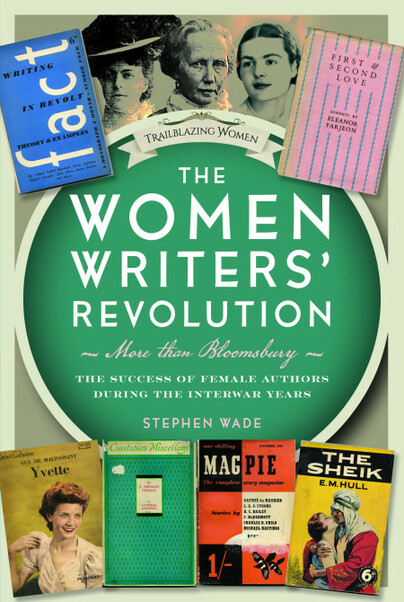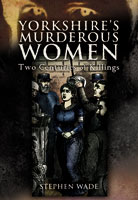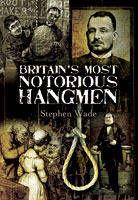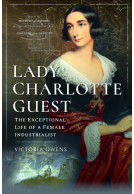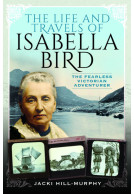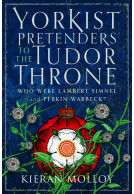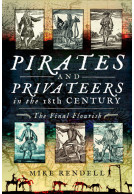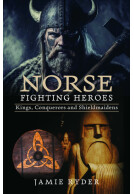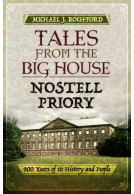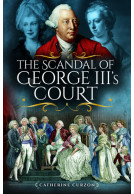The Women Writers’ Revolution: More than Bloomsbury (Hardback)
The Success of Female Authors during the Interwar Years
Imprint: Pen & Sword History
Series: Trailblazing Women
Pages: 256
Illustrations: 30 mono illustrations
ISBN: 9781399036450
Published: 6th March 2025
(click here for international delivery rates)
Need a currency converter? Check XE.com for live rates
In The Women Writers' Revolution, embark on a captivating journey through the dynamic social fabric of Britain from the aftermath of the First World War through to the burgeoning regional writing movement of the 1950s. This illuminating account not only delves into the literary achievements of women writers but also offers a profound exploration of the social realities they navigated.
From the early post-war years to the dawn of expanded women's franchise in 1928, aspiring women writers faced a landscape fraught with both challenges and opportunities. Through meticulous research and insightful analysis, this book vividly portrays the aspirations, struggles, and triumphs of these pioneering women who dared to make their mark in the literary world.
Discover the myriad experiences and skills required for success as a woman writer during this transformative era. From navigating the patriarchal structures of publishing to honing their craft in clubs and societies, these women defied societal norms and carved out space for their voices to be heard.
As the 1930s unfolded, a wave of documentary and realism provided a platform for depicting the lives of working-class women in politicized ways, captivating audiences through magazines and journals. Against this backdrop of social change, luminaries like Storm Jameson, Winifred Holtby, Dorothy Edwards, and Eleanor Farjeon emerged as trailblazers, leaving an indelible mark on British literature.
The Women Writers' Revolution is not just a literary chronicle but a compelling social history that offers profound insights into the experiences of women aspiring to get into print during a revolutionary period in Britain.
Rating: 5 out of 5 stars
NetGalley, Robin Joyce
Although a heavier read than many Pen & Sword publications this one carried me along because of the detailed and exciting material. This is a wonderful book, revealing so much about women writers in the interwar years, well known and lesser-known women, and even those who seemed to have disappeared. There is so much context, and there are also detailed references to male writers, as well as the Bloomsbury writers. However, the real legends of the book, the women writers about some of whom we know little, those who performed the revolution of Wade’s title, are there in full force. This is an exciting read, and one I relished from beginning to end.
Networking and the role of women’s clubs (one providing access to less wealthy women through lower fees) and providing commentary to newspapers, and women seeking reviews of their writing, is an intriguing topic. Networking, it becomes clear, is not an innovation at all! Magazines edited by women provided another source of access for women writers, and these are given a place in the narrative. Following the first chapter is one that resonates with domestic stories becoming professional success – or a series of rejections. ‘Becoming a Woman Writer’ includes such stories, the rise of Mills and Boon publishing, what publishers wanted – and what they received, readership and the types of publishing companies that encouraged women writers, how women learnt to write and have their manuscripts accepted.
The scene is set with a discussion of Edith Nesbit, Beatrix Potter and the amazing Charlotte Perkins Gilman’s works, establishing them in the period and amongst the work of male authors. The titles of the following chapters, ‘Discover Yourself’, ‘The Other Englands’, and ‘The Poets’ provide a flavour of further themes. ‘Influential Americans: Wharton to Parker’ is a whole chapter. Other topics are given an appendix – ‘Other Women Writers of the Period’; ‘The Bloomsbury Group’; and ‘Women Writers and Changes to the Law’. There is a fine bibliography and an index. Delightful graphics, including newspaper reports and letters, book and magazine covers and photographs accompany the text. The cover of ‘Come Out of the Kitchen!’ A Romance by Alice Duer Miller, featuring an emerging woman, and a full escapee, a black cat, is one of the graphics that stands out.
What a marvellous read – informative, lively, analytical in parts, introducing new writers and dealing well with the more well known – this is a real accomplishment. The Women Writers’ Revolution: More than Bloomsbury The Success of Female Authors during the Interwar Years is yet another book to which I shall eagerly return. I loved it.
So interesting! This book covers an interesting period of transition for women seeking to be published as writers. It is a social history as well as a strong analytical piece. It is also entertaining, so ideal for people who like their history with a sense of story telling.
NetGalley, Louise Gray
Rating: 5 out of 5 stars
NetGalley, Didem Durak Akser
Before I submitted my review, I had to go back and recheck the page count, because the copy I read was under 300 pages (268 to be precise) and I felt like having read a large encyclopaedia.
First of all, thank you to the author, and everyone involved in the publication of this book as well as those who studied women writers before and provided some of the source materials of this book.
This is a strong and thorough non-fiction book about women writers’ and their writing in the aftermath of WWI until 1950s.
While I said encyclopaedia above, that was to refer to the compact robustness of this book. I was glad to see analyses and opinion by the author.
A great addition to the literature, a beginning and continuation, and an inspiring read.
Rating: 5 out of 5 stars
NetGalley, Anita Wallas
What a wonderful book. There’s enough reference and source material alone to keep many readers with titles that will take a lifetime to read! I’ve been an avid reader for some seventy years and I found the content inspirational. So many books I read years ago that I’ll revisit with a freapsh and different view. Authors I’ve not read, but will look out as my interest in their work has been piqued by this book. I’ve never heard of Margaret Gilman, but her book, The Yellow Wallpaper, sounds extraordinary; a cry to be heard from a woman confined.
There’s a real social narrative to this book. Stephen Wade considers authors in the context of the time and prevailing attitudes. Male dominated inter war years were the start of a new freedom for female writers. Despite Larkin’s doubts about ‘the invasion’ of women into men’s colleges, women truly found their artistic voice. Wade considers different styles of writing, literary magazines, clubs and much more.
It’s easy to read, packed with information and there’s a comprehensive index, bibliography and the source material is clearly identified. I loved the end section which contains some portraits and extracts from ephemera. They alone were fascinating. If you enjoy books or social history you’ll love this title. Fresh and invigorating.
I really loved reading this and seeing the women writers before me and how their stories have inspired me to be a writer. Being a woman writer is powerful and reading these stories is something I greatly loved and can't wait to explore more of the works from the authors I knew but most importantly the authors I haven't read from the ones spoken about in this book.
NetGalley, Emma Lynn
About Stephen Wade
Stephen Wade is a freelance writer specializing in the history of crime and the law in Britain and Ireland. He has written fourteen true crime and crime history books, including Tracing Your Police Ancestors and Tracing Your Criminal Ancestors. His history of detectives, Plain Clothes and Sleuths, was published in 2007 and he is currently completing a history of the City of London Police. He also teaches crime history at the University of Hull and, as a visiting lecturer, at Oxford. He has contributed to Family Tree Magazine, Ancestors and other periodicals.







